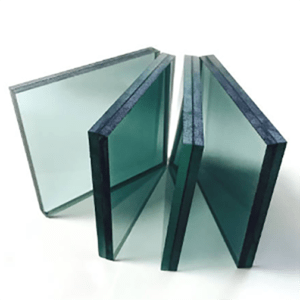 So what makes Smart Designs laminated glass different than other types of safety glass? Let’s take a quick look at the some facts.
So what makes Smart Designs laminated glass different than other types of safety glass? Let’s take a quick look at the some facts.
- Laminated glass is a glass that fails to break apart on cracking, a quality that causes the glass, to be categorized as a “safety glass.”
- Frenchman Edouard Benedictus, a chemist and artist, discovered laminated glass purely by accident. It was the result of an incident in which a glass flask, unintentionally covered in plastic film, had dropped and shattered but did not break.
- Édouard Benedictus filed a patent for laminated glass in 1909, and while it was designed initially for automobile windshields, it was not until after it had been used in World War I for gas mask lenses, that it became widely accepted for the use in cars.
- The front windshield is the only window in car that is laminated for purposes of safety. The other windows in an automobile are tempered to allow for access or egress in an emergency.
- Laminated glass is considered excellent for purposes of high security. Laminated glass is notoriously difficult to cut, resistant to many weapon types, and is unaffected or remains in a safe state in the case of natural disasters.
- As a general rule, the strength of laminated glass is directly proportional to the amount or thickness of plastic and glass layers.
- Multiple layers of laminated safety glass can be used to create “bullet-resistant” glass.
- The introduction of polyvinyl butyral in 1936, allows laminated glass to appear crystal clear.
- Most laminated glass naturally blocks out 97% of ultra-violet radiation.
- Laminated glass is a better sound insulator than monolithic (annealed or tempered) glass.
- Laminated glass with small fractures can be fixed through a process of drilling, filling with resin, and curing with ultraviolet light. Tempered glass if broken cannot be fixed.
- When cracked, laminated glass typically fractures in rings, a pattern that is comparable to a spider web, at a speed of 3,000 mph.
- Laminated glass has a higher probably of staying in its frame, in contrast to other glass types including tempered, during an earth quake.
- Laminated glass has the ability incorporate organics, metals, inorganics, textiles, textures, and digital images between layers of glass.
- Laminated glass has the ability to incorporate interlayers that can produces over 17,000 different and unique colors.
- Any color from any of the five major color standards, including CMYK, NCS, PMS, RAL, and RGD, can be incorporated into laminated glass in a variety of transparency levels.
